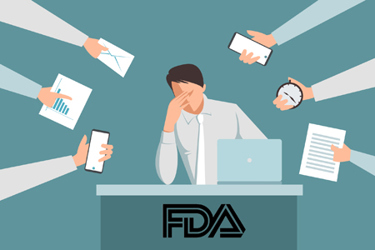FDA Under Pressure To Respond To China-Related Clinical Trials Questions

By Dan Schell, Chief Editor, Clinical Leader

It’s been eight days since FDA Commissioner Robert Califf received a letter that likely has him questioning why he agreed to return to the head post at the agency in 2022. The letter came from a group of House lawmakers who uncovered some serious concerns surrounding U.S. biopharma companies conducting clinical trials in China. It mentions national security, human rights violations, data integrity and IP theft issues — it’s not good. If you haven’t already, read the three-page letter for yourself.
None of this puts the sponsors of those China-based trials nor the FDA in a good light.
The letter requests Califf submit answers to the questions below by October 1, 2024. That’s gives the FDA 43 days to respond.
- Has the FDA reviewed clinical trials involving the PLA [People’s Liberation Army] or PLA facilities or conducted on-site inspections of PLA facilities?
- Has the FDA ever been denied access to foreign clinical trial sites in the PRC [People’s Republic of China], including but not limited to trial sites located on facilities affiliated with or owned by the PLA?
- How many PLA-owned, operated, or affiliated facilities has the FDA reviewed for clinical trial work?
- What is FDA’s estimated average cost for adjudicating a clinical trial conducted in the PRC?
- What is the earliest date for which the FDA received clinical trial data that included PLA organizations?
- Given FDA’s regulations for ensuring that clinical trials are conducted according to ethical and safety standards, has the FDA ever notified any U.S. biopharmaceutical organization that it has conducted studies with the PLA or in the XUAR? If so, please provide the number of notices and time periods when they were issued, and if companies were responsive.
- What metrics does FDA use when assessing IP and technology transfer risks? Within those metrics, how are the risks calculated when research studies identify collaborations with the PLA or involve PLA-owned facilities as the setting for the research?
QUESTIONS BREED MORE QUESTIONS
Reading through the above, I too, had some questions. For example, is 43 days long enough for the FDA to gather this information? I’m not saying they should get more time or that this shouldn’t be a priority. I’m simply wondering if an agency that has been criticized over the years as being understaffed and slow to operate will be able to gather all this data in such a time frame. And, are there already dedicated staff who can handle such information requests, or will this require some folks to stop what they are working on to prioritize the answers to these questions? If the latter is true, will any ongoing projects be delayed?
Beyond those kinds of questions, you also have to wonder about the repercussions once these answers become public. Will the answers spur policy changes at the FDA? Who will be blamed at the agency? How will the biopharma companies that were involved in these trials be affected (e.g., stock price, reputation)? Will sponsors begin to shift away from using China, in general, as a site for clinical trials? If so, where will they go to replace that level of diversity? And as my colleague Louis Garguilo at Outsourced Pharma pointed out, will this letter reignite the focus on having the House vote on the BIOSECURE Act?
Whatever spurred the creation of this letter, I believe that the concerns raised in it warrant investigation. I also think that, at the very least, the answers to many of those questions could help shed some light on areas where the FDA could improve.
I’m curious what questions or feelings you may have about this matter. Email me at dan.schell@lifescienceconnect.com or connect with me on LinkedIn.
